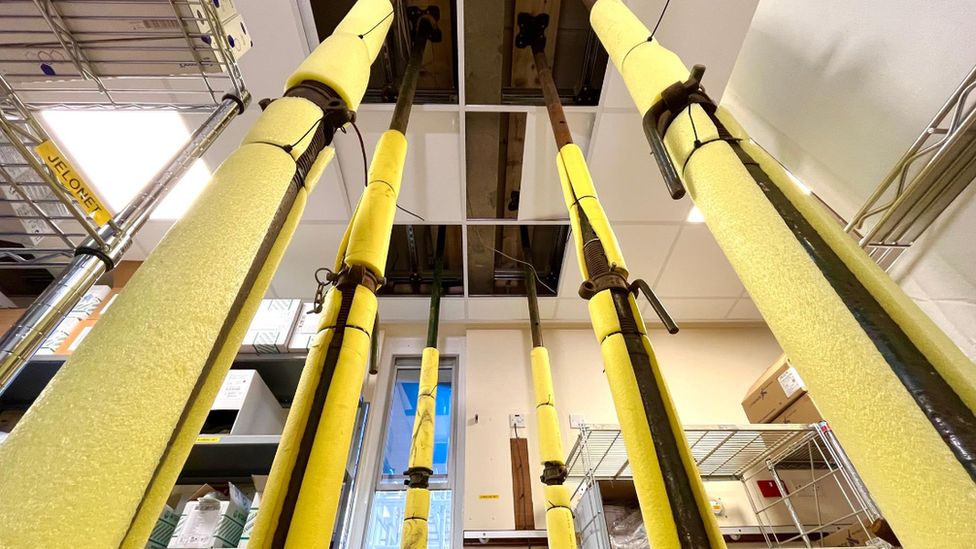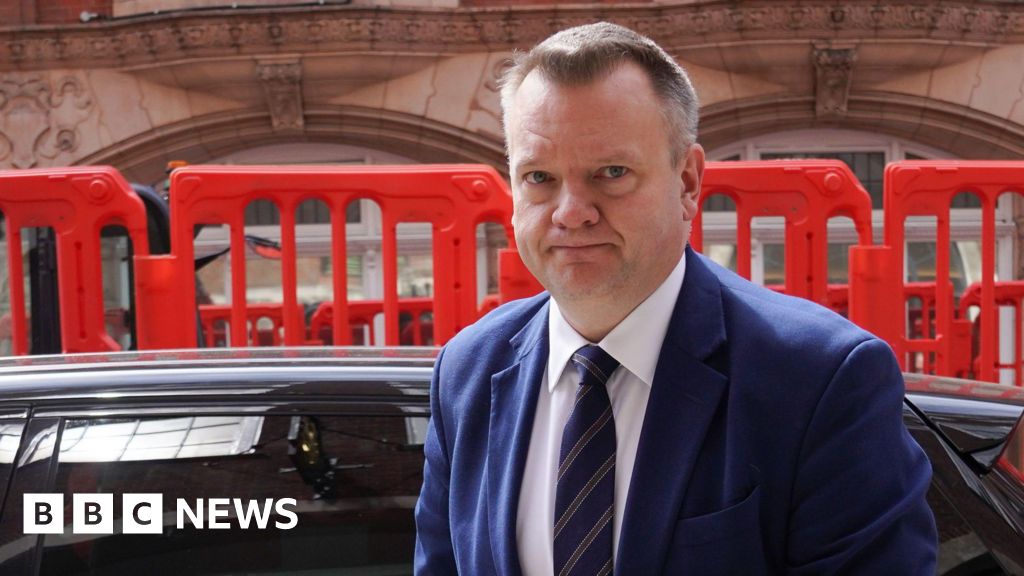ARTICLE AD BOX
 Image source, Martin Giles/BBC
Image source, Martin Giles/BBC
Hinchingbrooke Hospital, in Huntingdon, Cambridgeshire, is one of the sites previously known to use the concrete
Eighteen more hospitals in England contain potentially crumbling concrete, bring the total affected to 42, the Department of Health has confirmed.
The reinforced autoclaved aerated concrete (Raac) has also been found in 214 schools and colleges in England as well as thousands of other buildings.
NHS Providers, which represents hospitals, said the concrete "puts patients and staff at risk".
Full structural surveys are taking place at all newly confirmed sites.
The government said it was committed to eradicating Raac from NHS buildings completely by 2035.
Seven of the worst-affected hospitals will be replaced by 2030 as part of the programme to build 40 new hospitals in England, it added.
What is Raac?
Raac is a lightweight material that was used mostly in flat roofing, but also in floors and walls, between the 1950s and 1990s.
It is aerated, or "bubbly", like an Aero chocolate bar.
Although a cheaper alternative to standard concrete, it is less durable and has a lifespan of about 30 years.
And when it gets wet, the bubbles allow water to enter the material making it more likely to crumble.
It is not clear how much of the concrete is present on each hospital site. In most cases, it is in limited parts of a building, health officials say.
Sir Julian Hartley, chief executive of NHS Providers, said there had been fears that more of the material would be found following surveys of NHS buildings.
"Trusts are doing everything they can, at huge cost, to keep patients safe where this concrete is found," he said.
Seven trusts that are most at risk will have their Raac replaced by 2030, but he said it would be 12 years before other hospitals and buildings have it removed and replaced - and that could put patients and staff at greater risk.
"The Raac problem is a symptom of a far bigger and long-running one," Sir Julian said.
"The NHS has a £10bn-plus backlog of repairs as it struggles to maintain too many creaking, leaking and outdated facilities and buildings.
"Many trusts still need major investment to refurbish ageing buildings and tackle other risks to the safety of patients and staff."
The Department of Health and Social Care said all hospital sites with confirmed Raac were included in a national programme backed by additional funding of £698m.
Where the concrete is identified, inspections and surveys will work out the level of risk.
Three sites that were previously earmarked as having Raac have got rid of the concrete and left the programme.
Labour shadow health secretary Wes Streeting said patients deserved to know if they were at risk from hospitals in need of urgent repairs.
"The Conservatives must be clear about their plan to fix this crisis," he said.
"The Tories literally did not fix the roof when the sun was shining, and now patients have to make do with crumbling hospitals for years to come."
Meanwhile, a recent BBC investigation found that building work is yet to start for 33 of the government's 40 promised new hospitals in England.
Related Internet Links
The BBC is not responsible for the content of external sites.

 1 year ago
31
1 year ago
31








 English (US) ·
English (US) ·